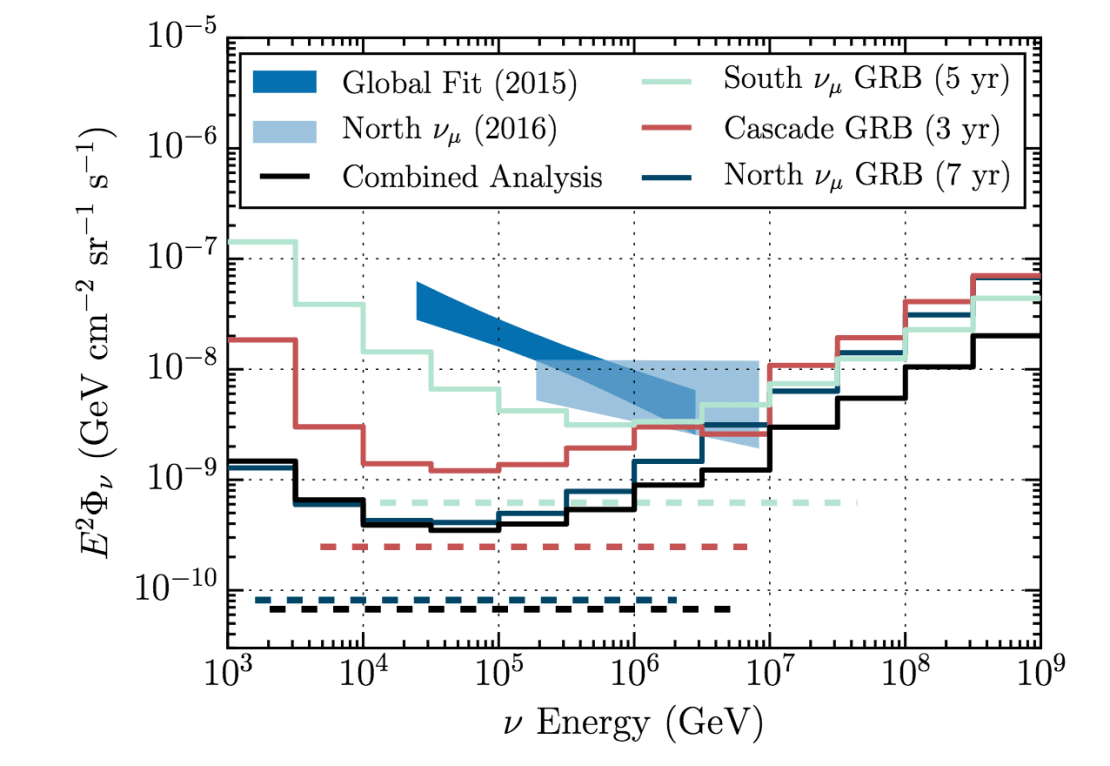Gamma-ray bursts (GRBs) have long been demoted from their status of golden candidates for ultra-high-energy cosmic rays (UHECRs) and the associated PeV-and-above neutrinos. However, many models still predict significant amounts of neutrino emission from GRBs, which could be detected in IceCube.
The IceCube Collaboration now presents an update to previous GRB searches and broadens the search to the Southern Hemisphere using data through May 2015. The inspection of the southern sky increases the sensitivity to the highest-energy neutrinos, which are largely absorbed before reaching IceCube after sailing through the Earth. Researchers looked for neutrino emission in conjunction with prompt gamma-ray emission from 1172 GRBs and did not find any significant correlation with neutrinos detected in IceCube. These results set the strongest constraints yet on GRBs as primary sources of UHECRs. This study has just been submitted to The Astrophysical Journal.

GRBs are known sources of huge amounts of gamma rays produced—if our models are correct—in a plasma of electrons, photons, and hadrons that is released in the so-called relativistic fireball. Electrons and protons in this fireball are accelerated to the highest energies, producing very high energy gamma rays and neutrinos, respectively. Therefore, these prompt neutrinos could be observed in both temporal and spatial coincidence with prompt gamma-ray emission from GRBs.
The current study updated previous searches for GRB neutrino emission in the Northern Hemisphere by using three more years of data, but the major improvement in sensitivity came from expanding the search to the Southern Hemisphere. Although neutrinos interact very rarely with matter, the probability of interaction increases with energy. Earth absorption reaches 90% for energies around 100 TeV and above.
When looking for coincident neutrino emission from GRBs, researchers identified at least one neutrino event during 25 of the studied GRBs. “But none of the observed events appeared to point to the known GRB location, and all were consistent with what we expected from background events,” explains John Felde, a researcher at the University of Maryland and a corresponding author of this paper.
The study has set new constraints on GRB prompt neutrino emission, which improved on IceCube’s previous results and exclude GRBs as main sources of UHECRs in most of the scenarios. However, if GRBs have a much lower neutrino production efficiency or if neutrinos are mostly produced at other times in the evolution of a GRB, IceCube cannot yet exclude neutrino emission from these types of sources.
The new techniques introduced in this analysis also allow searching for near real-time neutrino emission from detected GRBs. If neutrino emission is detected from a new GRB, IceCube is now able to immediately send an alert to the multiwavelength astronomy community.
+ info “Extending the search for muon neutrinos coincident with gamma-ray bursts in IceCube data,” The IceCube Collaboration: M. G. Aartsen et al. The Astrophysical Journal 843 (2017) 112, iopscience.iop.org arXiv.org/abs/1702.06868